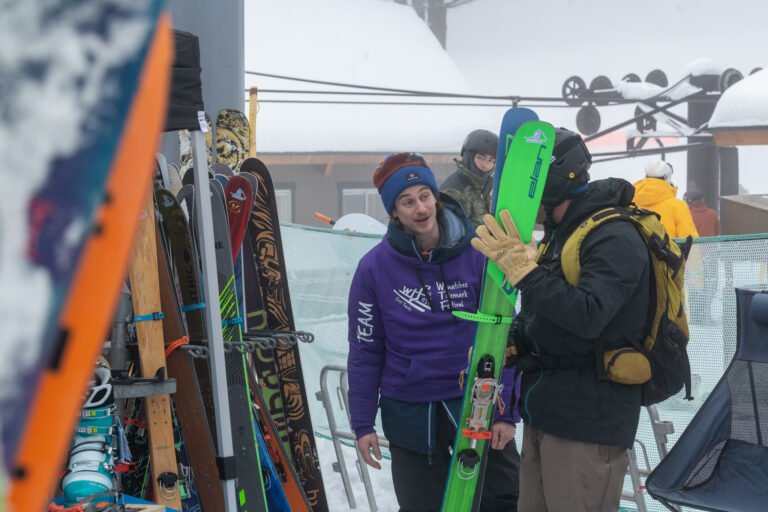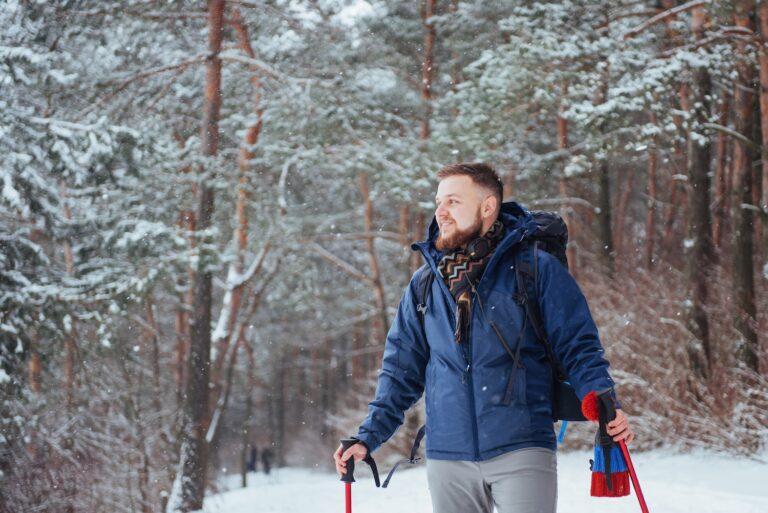The spring breeze chases across Saltese Uplands, and gray clouds glide overhead as the pilots watch the windsocks carefully, gauging the air they intend to ride. Watching the paraglider pilots prep their gear takes me back to my own (single) successful flight outside of Tekoa, and I’m revisited by humankind’s age-old desire to take to the skies and soar with the birds. And evidently, I’m not the only one.
“Free flight” refers to methods of flight, like hang gliding and paragliding, that don’t rely on engines. According to Steve Baran, the president of Spokane’s free flight club—Center of Lift—and a hang glider pilot since the 1970s, there is a huge uptick in interest for airborne activities. And it’s no wonder! With dozens of areas nearby to fly and entry level used gear on the market for under $2,000, the sports are more accessible locally than ever.
While visiting Saltese, I chat with a few flyers. Irena Pia describes her husband, Ian, as a self-taught enthusiast. “He built a hang glider when he was a teenager, and then a little over a year ago, found a used set-up online.” The couple is entering law school at Gonzaga and lives close to Saltese so they can practice their paragliding skills.
It can be tough to break into the sport if you’re hoping for professional instruction. The closest certified instructor is in Cashmere, and although there are lots of local certified pilots, the cost and red tape involved in being an instructor can be a barrier. According to Baran, many flight communities are supported by local cooperatives that function with trained pilots; loaner gear; and members who pay dues to enjoy lessons, access to gear, and insurance for local flying areas. He’d like to see this model take off in Spokane.
Center of Lift has been hard at work for years, securing areas that are legal for free flight as well as safer and more accommodating, with parking, camping, restroom facilities, and solid landing zones. Sometimes that means clearing a site or securing approval and insurance for private property. It can mean rerouting fencing, revisiting old policy language, or calling a landowner to explain what the sport is about and how the pilots care for the areas in which they love to fly.
On the surface, free flight can seem like a high-risk activity, one that deters many. Every pilot I’ve experienced, though, has been realistic about the risk and errs on the side of caution. “If in doubt, wait it out,” paraglider pilot Ian Brookwell says, as we all gaze toward oncoming breeze. Nevertheless, he and Brendan Duddy shoulder their gear—wings, rescue parachutes, harnesses, and helmets—and head up a hill toward the middle of the conservation area. There’s a break in the clouds and it looks like the wind might calm down, providing steady lift instead of inconsistent gusts.
If you’re interested in free flight, the first step is to become a weather nerd. Because free flight is actually gliding—which is really a carefully controlled fall—having a gentle, consistent breeze to keep you airborne is critical. If it’s too windy, or if there are gusts, a pilot runs the risk of collapsing a wing or not being able to take off.
Those who recreate outdoors are no strangers to “hurry up and wait,” as we try to find the best conditions to practice our passions. Whether it’s whitewater paddlers planning their line, downhill bikers waiting their turn to shred, or day hikers waiting for a break in the rain, we all know the feeling of anticipation as we imagine the moment of freedom.
I watch as Ian and Brendan stand at the cusp of the hill, faces to the wind, waiting for their time. It turns out their time isn’t today. But that’s why they both live nearby. So they can try again tomorrow. /













